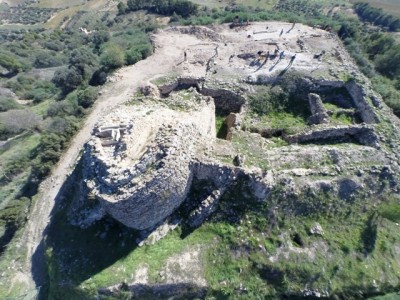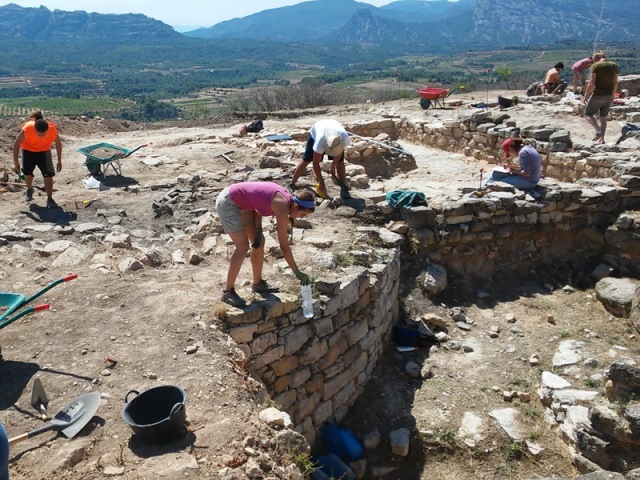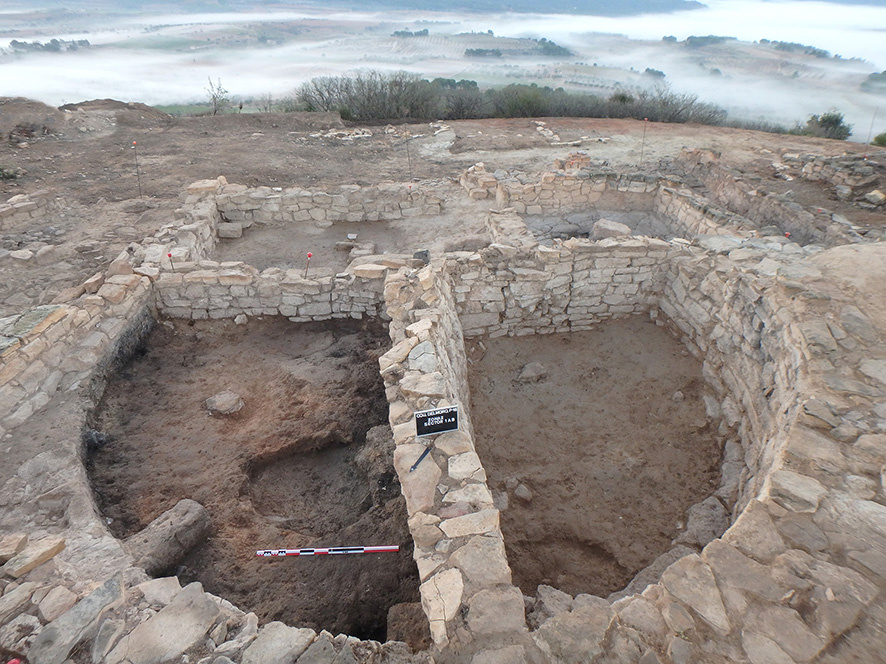

J. Noguera
New campaign of archaeological works at the archaeological site Coll del Moro, an Iberian fortified settlement of about 3.350 m from the Ilercavones tribe, located in the area of Gandesa (Tarragona).
These archaeological works belongs to the research project UB-ICAC «Conformation, development and dissolution of Iberian culture in the lower course of the Ebro river (s. IX-I BC)», leaded by Rafel Jornet (UB – Món Iber ROCS), Maria Carme Belarte (ICREA-ICAC), Jordi Morer (Món Iber ROCS), David Asensio (UB – UAB – Món Iber ROCS) and Joan Sanmartí (UB). With funding from the Department of Culture of the Catalan government (Generalitat de Catalunya) and the city council of Gandesa.
The excavation campaign 2019 (July 8th – 27th) will be mainly about drawing and documentation of structures. During 2019 spring, a preventive intervention was carried out in the settlement to remove old soil and prepare the access area. Now, these preliminary works will be completed and the new structures discovered during the last intervention will be documented. It is also planned to clean the previously excavated areas to complete the registration and documentation of the set of structures.


Archaeological works in this area were restarted in 2014, within the project «The first millennium BC in the territories of the lower course of the Ebro river: conformation, development and dissolution of the Iberian Culture 2014-2017», led by the University of Barcelona and with the participation of the ICAC.
Up to that moment, interventions (introduced in the 70s) focused on the northern area, the area of the Coll del Moro tower and nearby structures, but the habitat was little known. The extended excavation area made possible to locate the remains of a habitat sector from the 3rd century BC, with numerous vestiges of houses foundations and streets.
Third excavation campaign (2016) enabled the documentation of a set of structures defined as an oil mill from the 3rd century BC, the oldest one in Catalonia, which belongs to the middle Iron Age and was abandoned around 200 BC. Above there is a later, Roman-Republican stage, from 125 BC, approx.


The last archaeological works focused on the excavation of the so-called “zone 2”: a set of buildings in a rectangular body, with different spaces and attached to a likely outer wall. The buildings communicate with each other through apse enclosures that probably had a defensive function.
The most oriental building is the one studied at the end of the 80s by Núria Rafel. It was described as a linen washing and textile production room. In the last excavation campaigns, there were abundant archaeological findings, standing out the large ceramic containers and loom weights, as well as carpological remains (a lot of grape seeds, Vitis vinifera). Overall results of the different archaeological interventions indicate that this area of the settlement has a strong economic and artisanal character.
In one of the rooms, there was found a foundation ritual that can be described as a cut in the natural rock with a polished stone inside, a piece of ceramic and a pig bone. In the Iberian world, rituals of foundation were a common practice to ask for the protection of gods.





